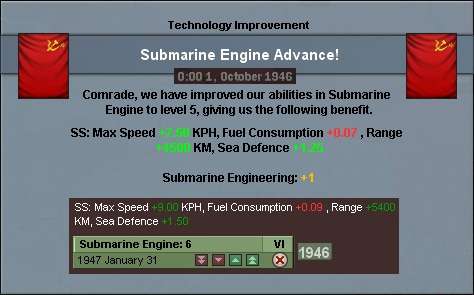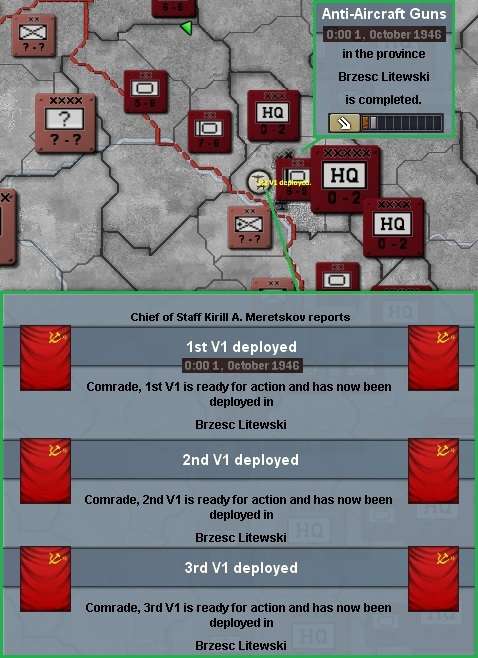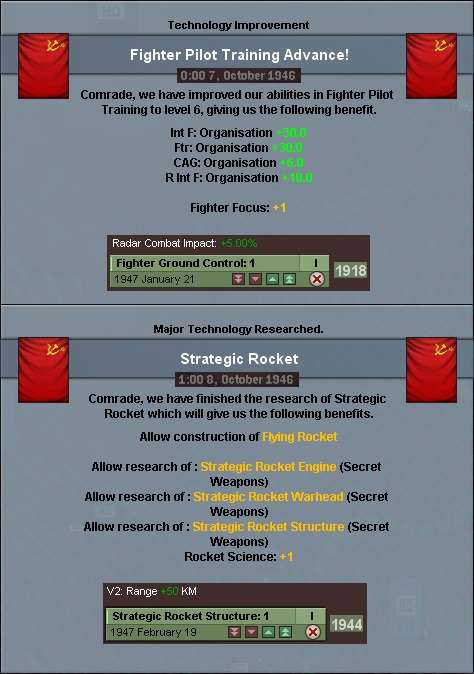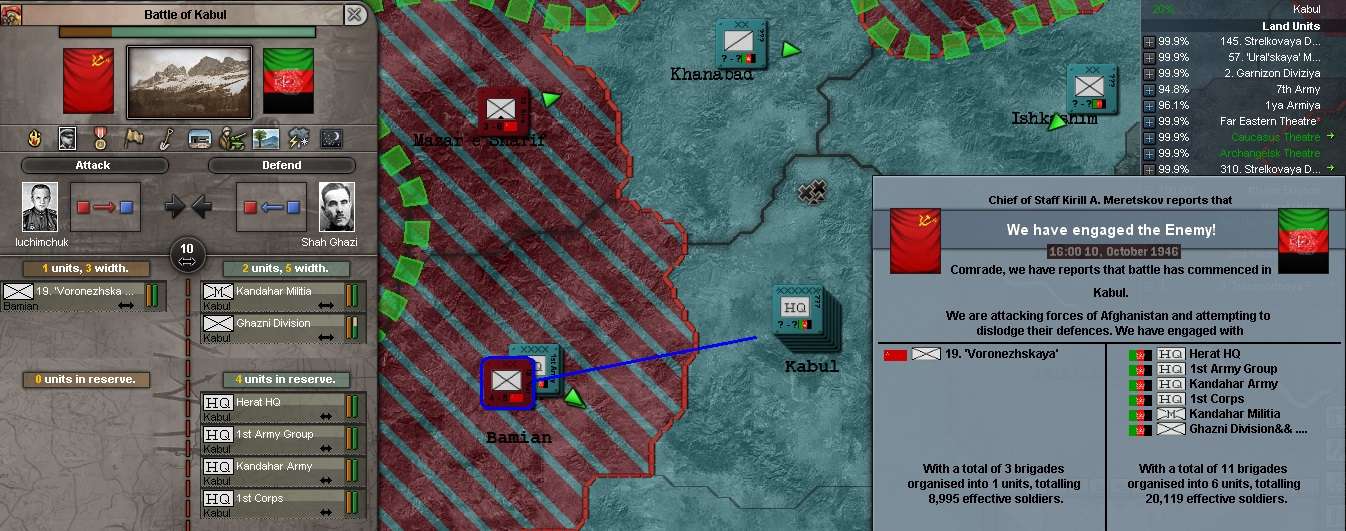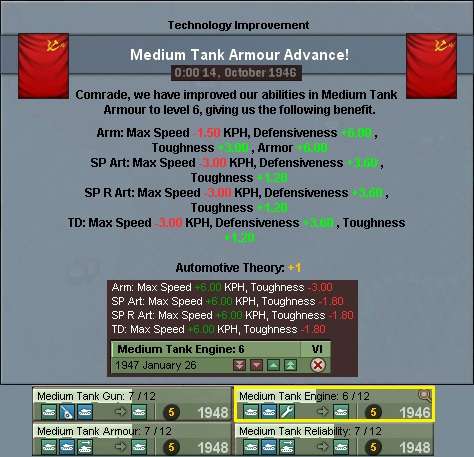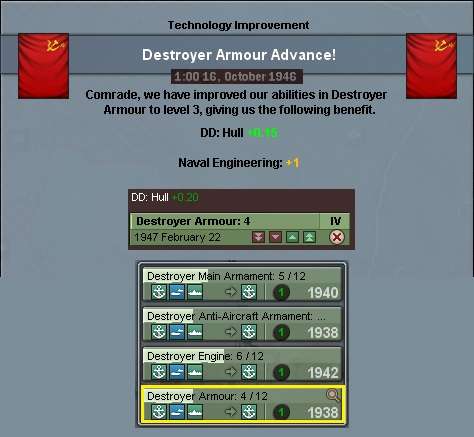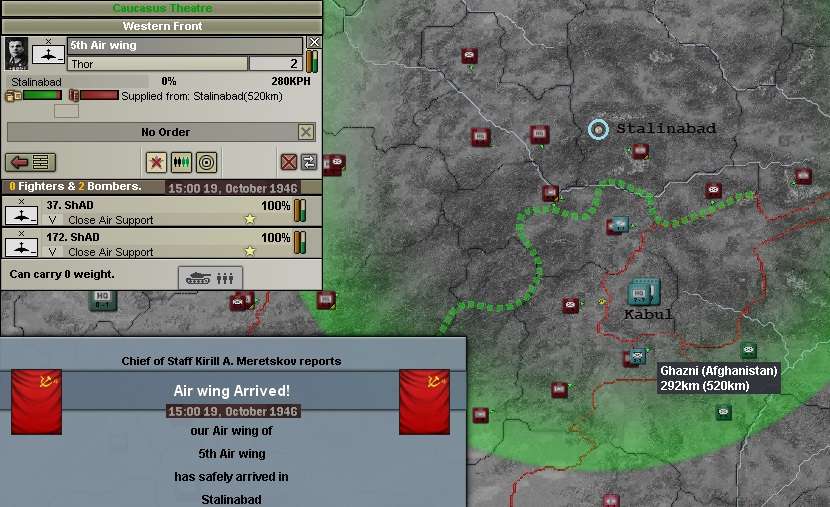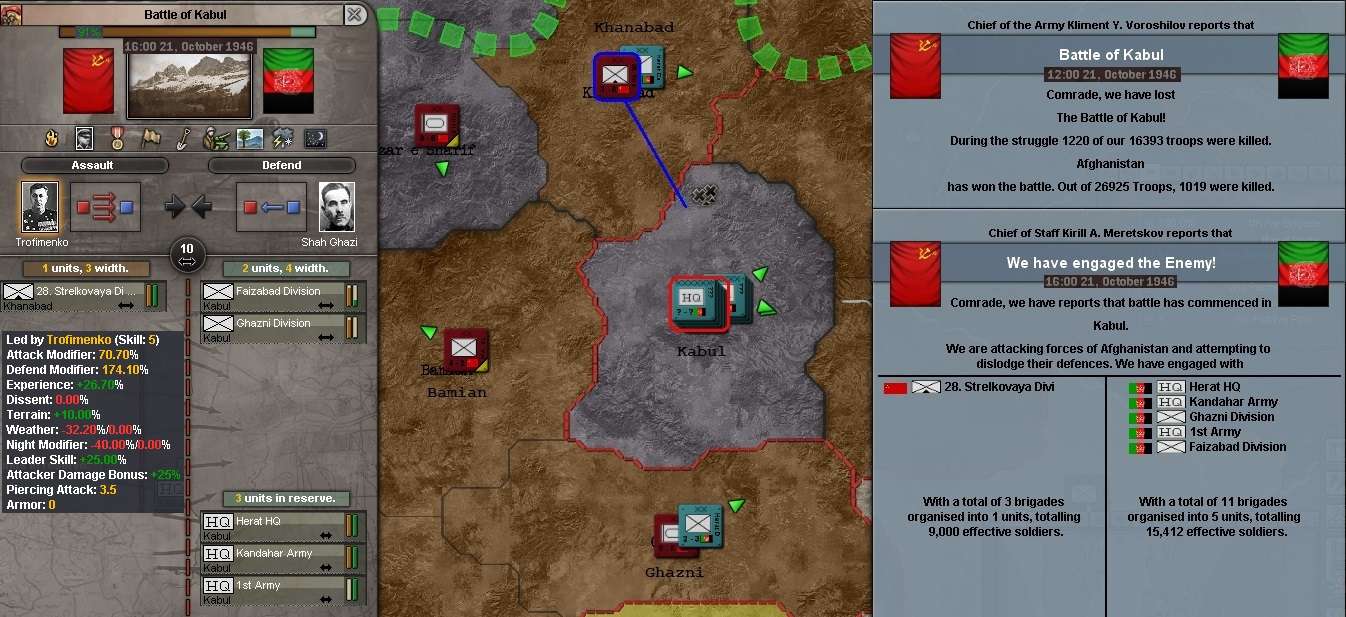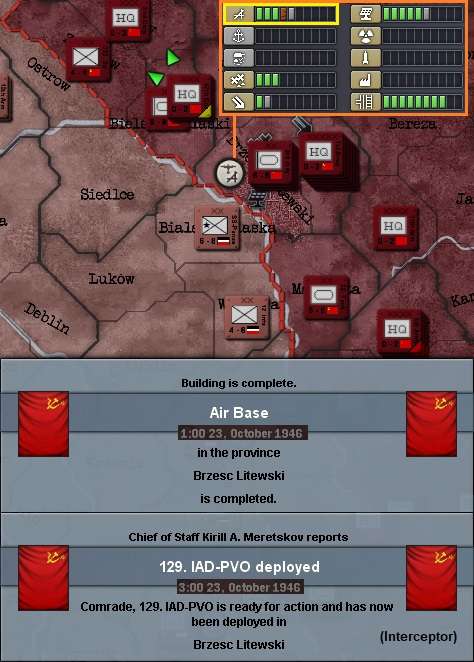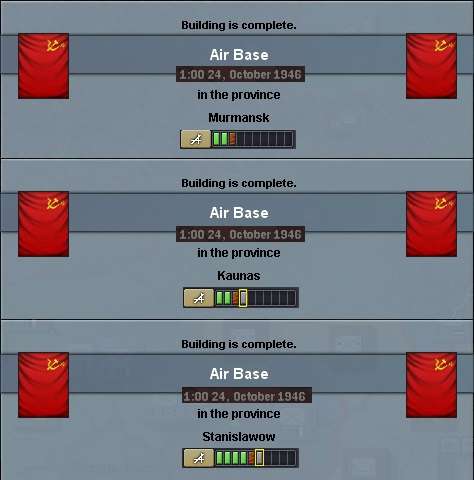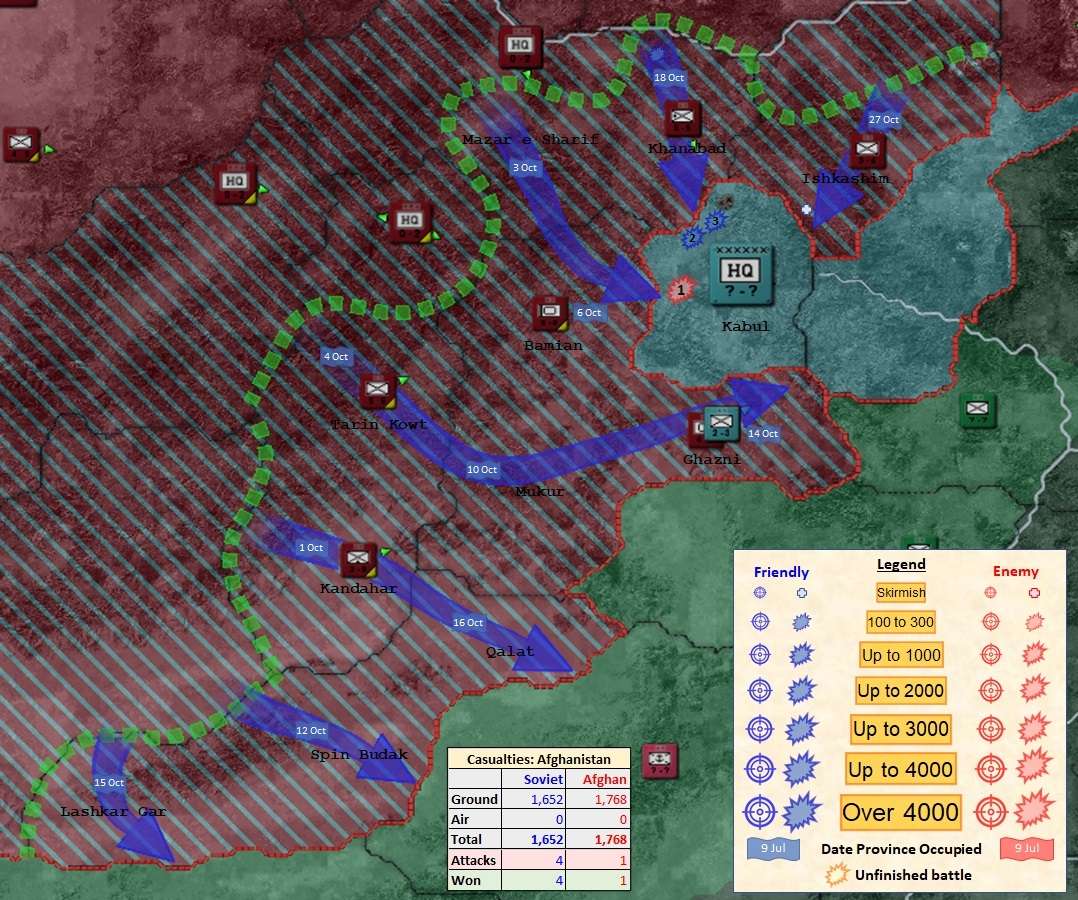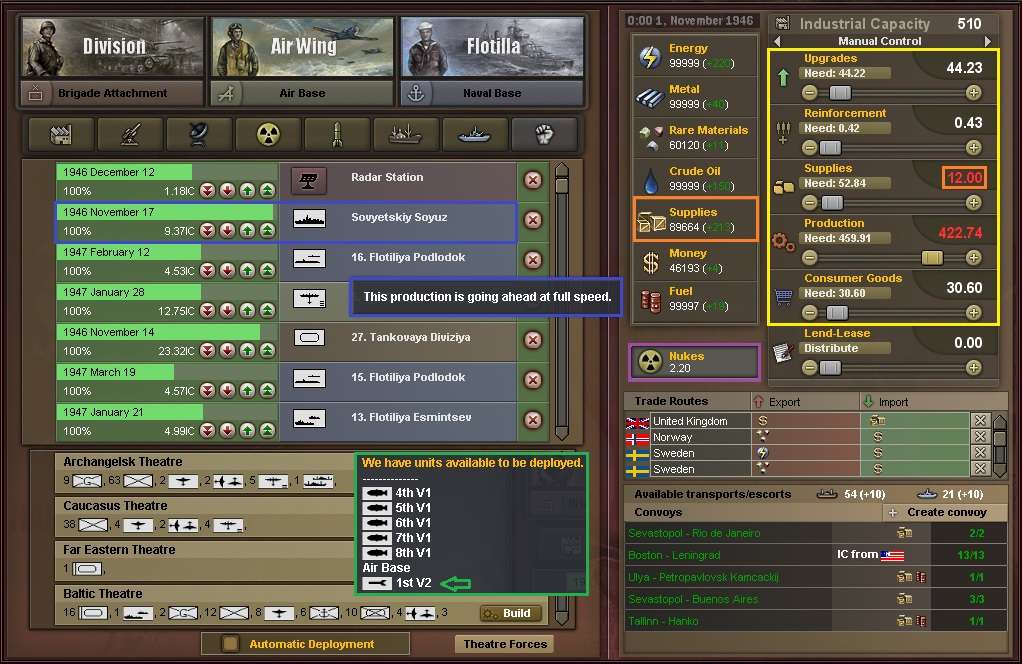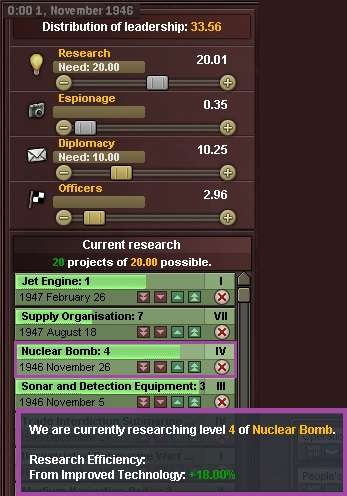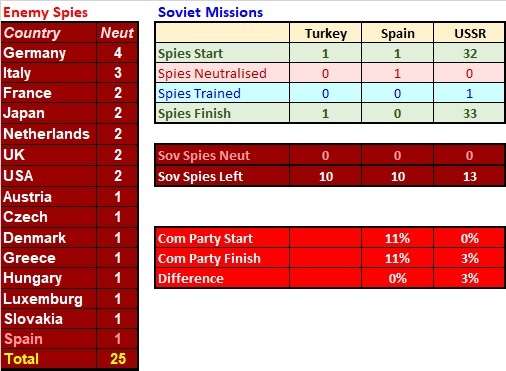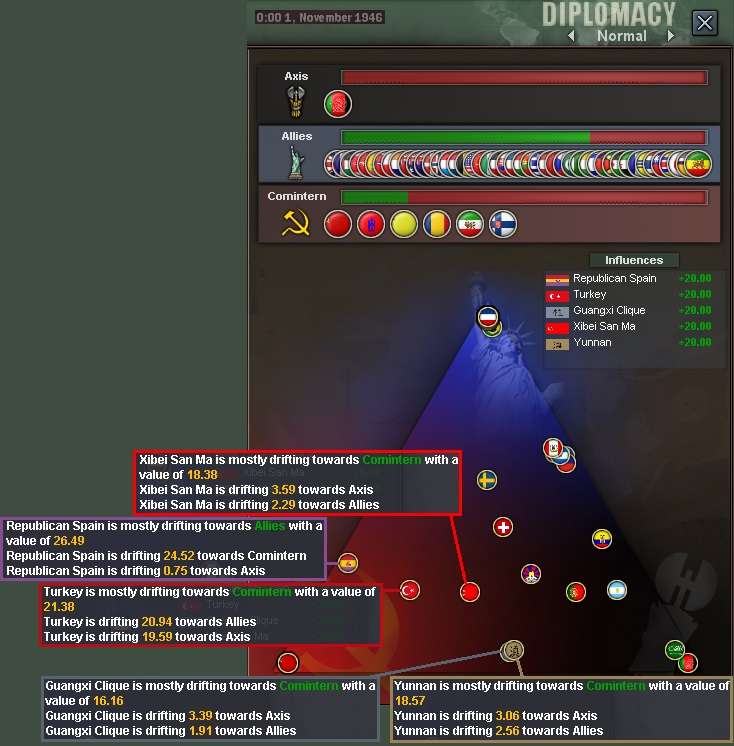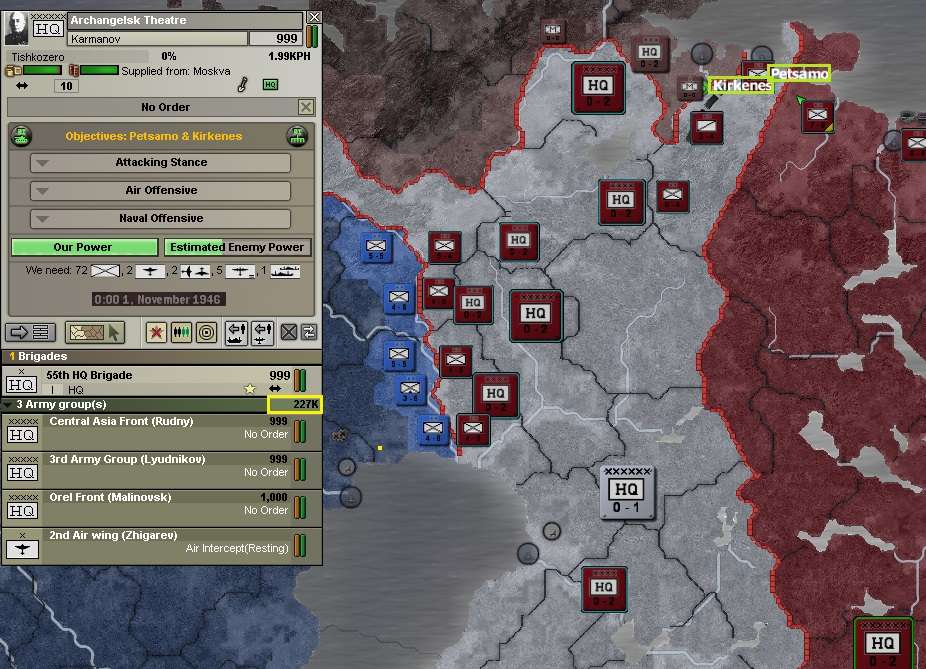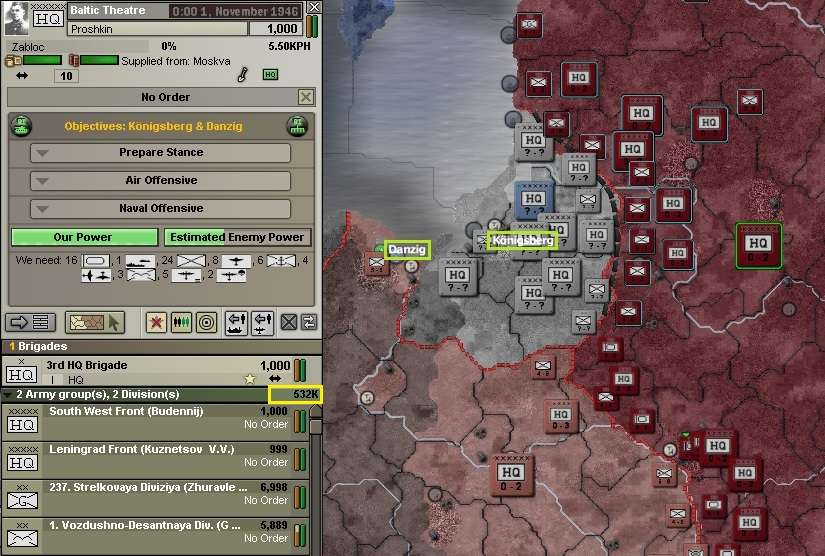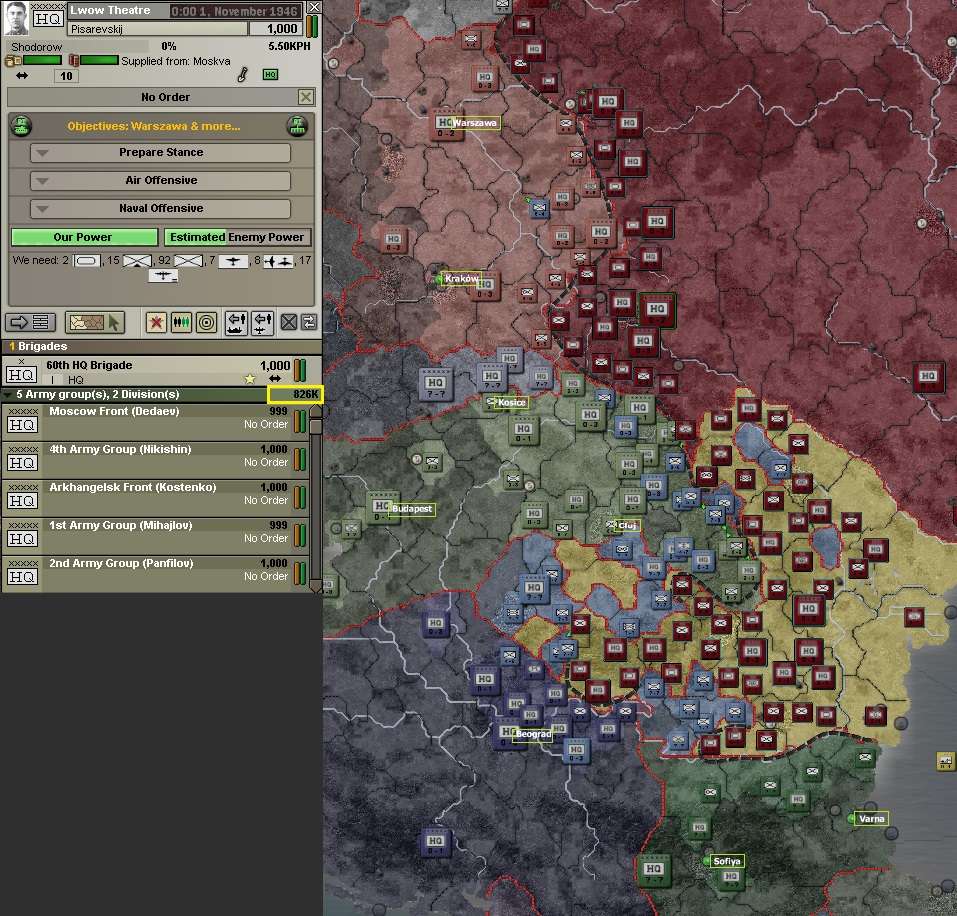Chapter 31 – September 1946
Chapter 31 – September 1946
Foreword
The Soviet war in Afghanistan (now, where have we heard about such things before?) had got off to a slow start. The Caucasus Theatre’s forces had to reposition themselves, drive out a few Afghan incursions, then start the difficult business of pushing back an Afghan Army that had established a thorough border coverage, albeit largely with militia units.
Soviet atomic bomb production continued as Stalin nursed his grudge against France and its Allies for the predatory peace agreements they had made with Japan and Manchukuo, ruining the plans for revolution in the east using Japan as a Comintern puppet.
******
1 September
While the campaign against the (presumed) last Fascist regime ground on in Afghanistan, air bases along the western frontier were reviewed and selected ones expanded (radars shown under construction were queued previously). Of course, nothing could be done to improve the Romanian-run base in Bucharest.
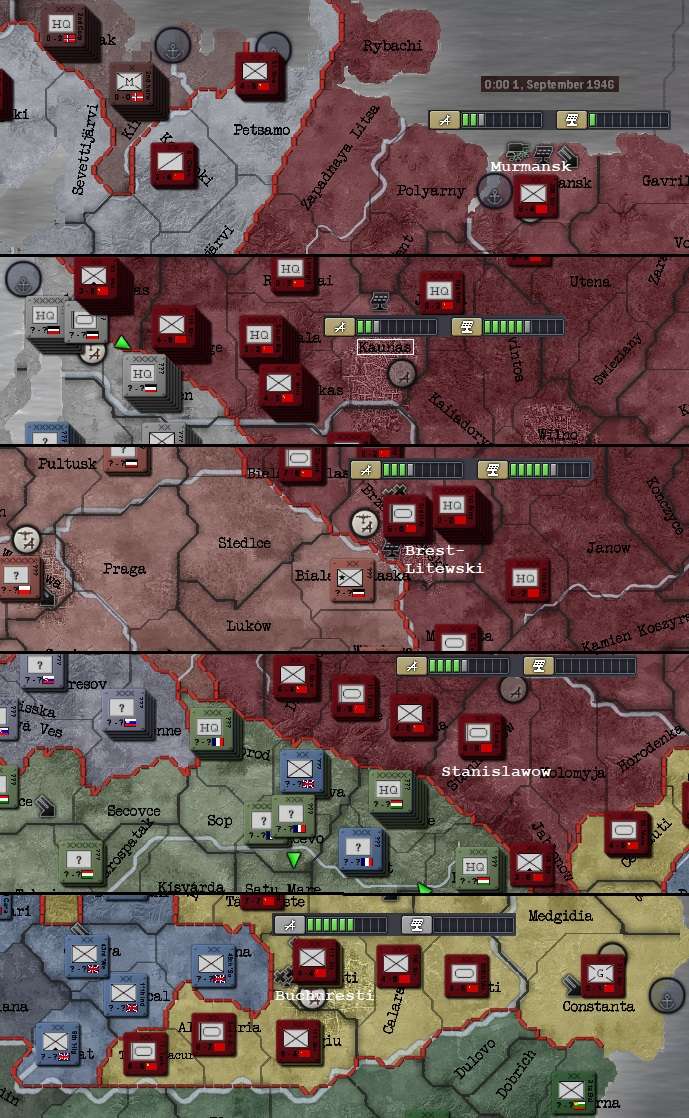

3 September
Qal ‘eh ye Now was occupied at 1500hr and Feyzabad (a few provinces north of Kabul) at 2200hr.
A savage fight for Ishkashim (north of Kabul) began and would last until 9 September, with a Soviet victory (1,131 Soviet and 1,120 Afghan casualties). Yet another under-strength probe on Khanabad by Soviet garrison troops failed after a brief firefight.
4 September
No Soviet planes had been deployed to the new ‘bare bones’ air base in Stalinabad, but on 4 September a wing of Persian CAS appeared there! There was no observed evidence of them carrying out any missions during the month, however (I’ve left it to the AI to decide whether it wants to deploy any Soviet wings there).
Sheberghan (north east of Qal ‘eh ye Now) was occupied at 2200hr.
5 September
The battle for Shindand began, ending the next day in a Soviet victory (35 Soviet, 88 Afghan casualties).
At midday, 9 Tank Div reported it had occupied Herat – a major blow to Afghan morale. The advance was now gathering some pace, despite the difficult terrain.
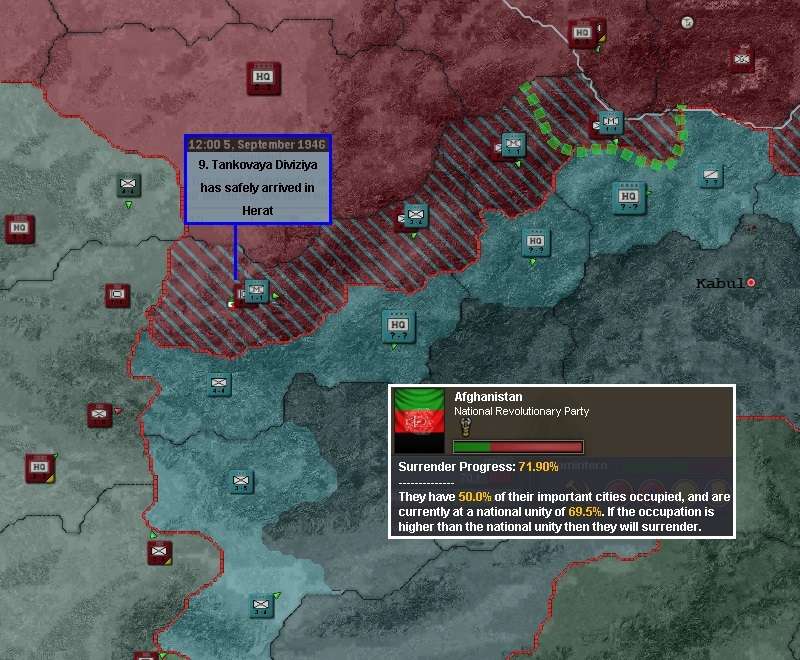
9 September
A new attack began on Khanabad, but this time with regular forces backing the push. The battle would be won by 13 September, costing 142 Soviet and 573 Afghan lives. A major sticking point on the advance to Kabul had been shifted.
13 September
Shindand, just south of Herat, was occupied at 1800hr.
A hard-fought battle for Farah began in western Afghanistan, finishing on 16 September in a Soviet win (452 Soviet, 581 Afghan casualties).
A second attack, this one for Taimani, was launched the same day. It would run for another six days, the Soviets winning another stiff fight (232 Soviet, 449 Afghan casualties).
And a third attack, also in western-central Afghanistan, began. It lasted two days, the Soviet victory eventually costing 53 Soviet and 166 Afghan troops.
14 September
A new ‘general purpose’ infantry division was deployed to the far north of Russia, where there were concerns over a large build-up of Norwegian forces on the Finnish border.
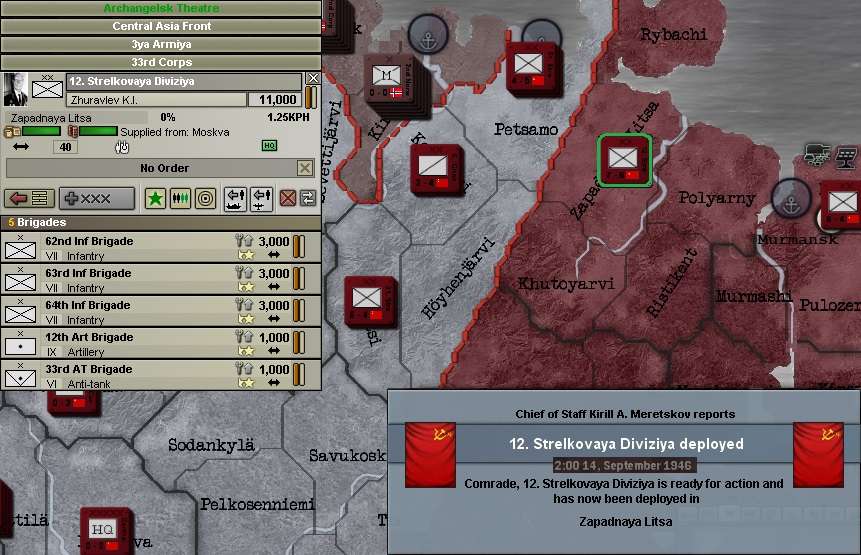
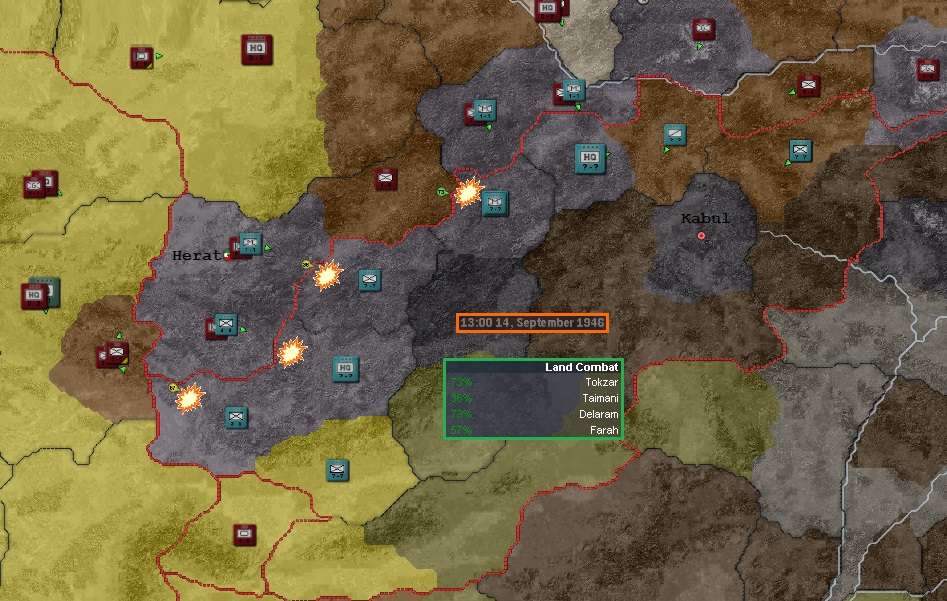
Soviet manpower reserves stood at a massive 6,026,000 men. Almost all units were at full strength, with 75,200 new recruits being added each month.
22 September
A more serious fight for Delaram began when an Afghan division slipped in before it could be occupied. The Soviets prevailed on 25 September (147 Soviet, 165 Afghan casualties).
23 September
The next round of occupations began, with Farah (on the western Afghan border) falling to the Soviets at 2300hr.
24 September
Tokzar’s fall at 1700hr extended the Soviet advance further into the Afghan hinterland. The Soviets won a short battle for Gereshk (27 Soviet, 122 Afghan casualties).
25 September
The occupation of Taimani at 1400hr extended the advance further into the mountainous Afghan heartland.
26 September
Small air search radars were improved and the research teams were kept on the same project: night-fighting capability would be important in any confrontation with the high-tech Allied fighters in Europe.

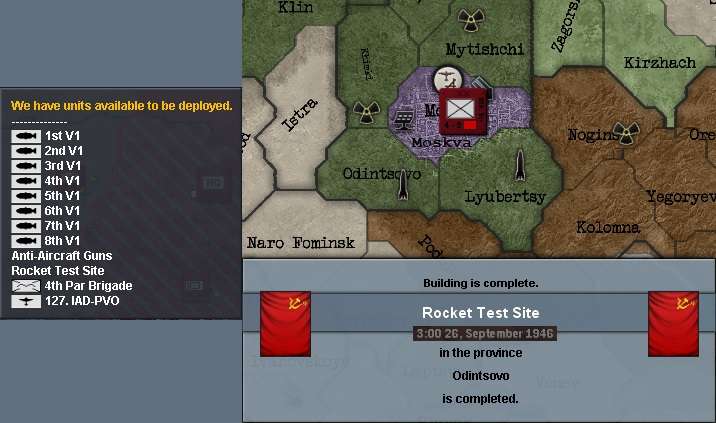
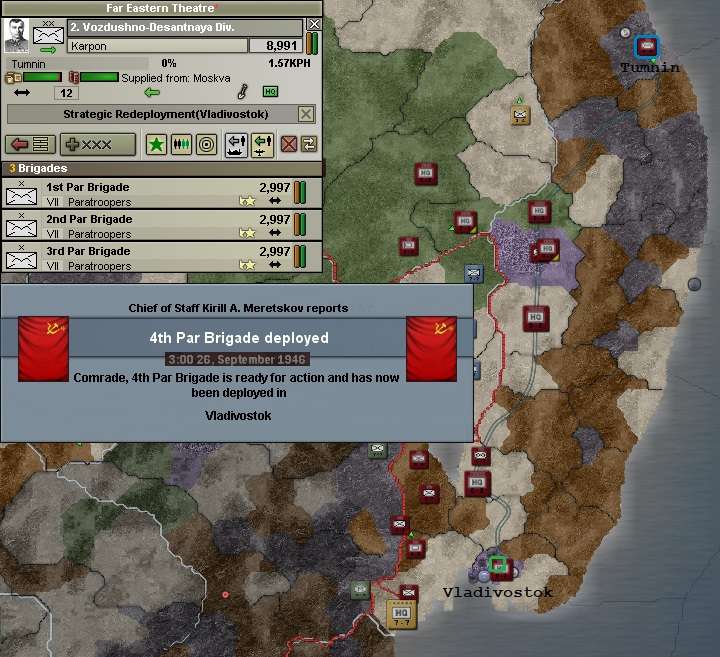
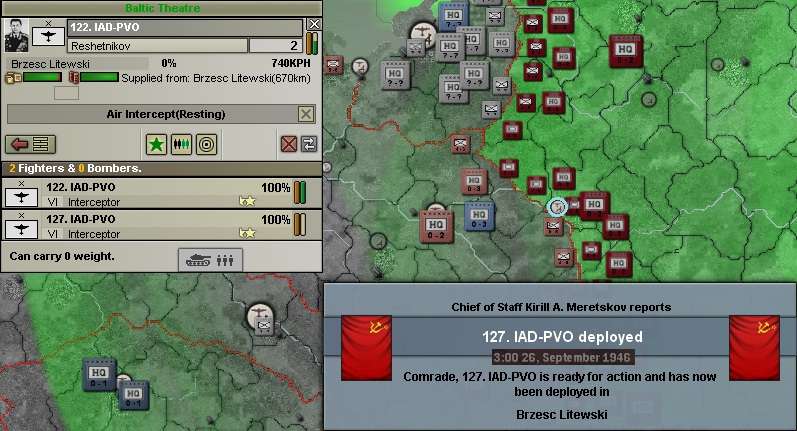

27 September
Delaram (north of Gereshk) was the next to fall into Soviet hands at 0600hr.
28 September
Infantry warfare doctrine was advanced, with attention turning next to improving mechanised warfare..
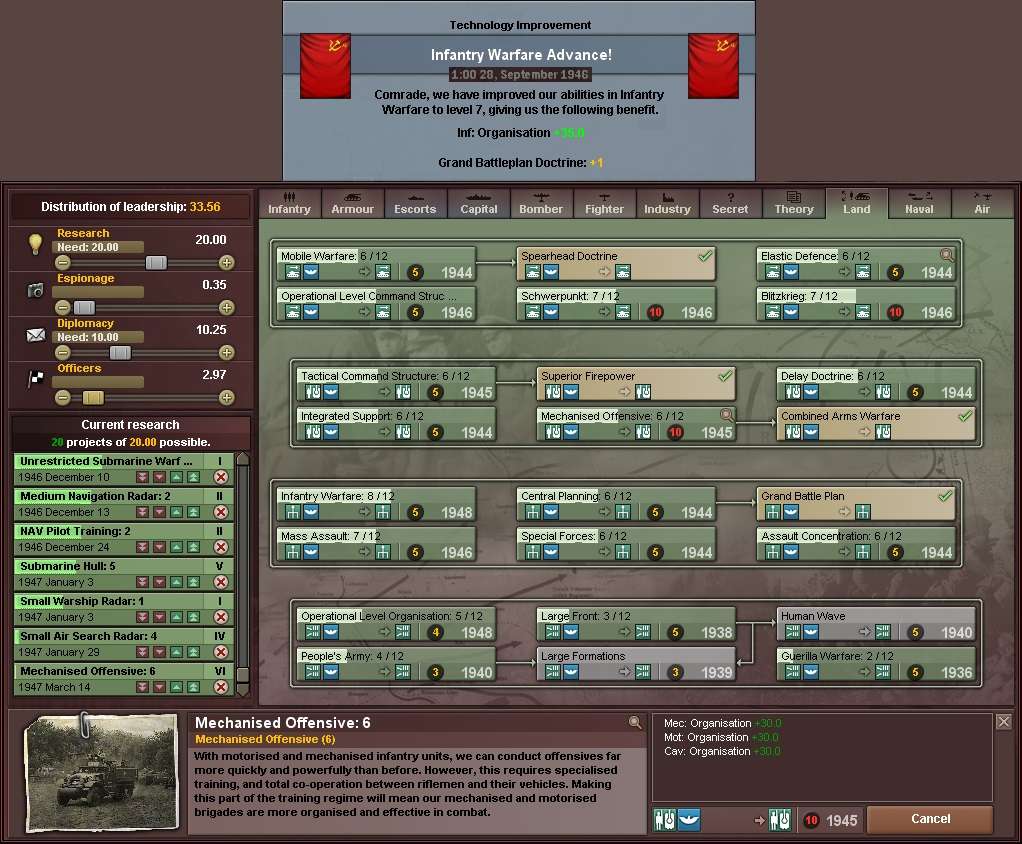
The last action of the month was fought and won by the Soviets in Tarin Kowt (a very familiar name to Australians from more recent experiences), with five Soviet and 31 Afghan troops killed.
30 September
As the month ended, the sweep through the west of Afghanistan had gathered pace. The way to Kabul from the north had been more heavily contested, but the two victories in Khanabad and Ishkashim plus the advance from the west, should pave the way for Soviet units to advance to the outskirts of Kabul in the first part of October 1946.
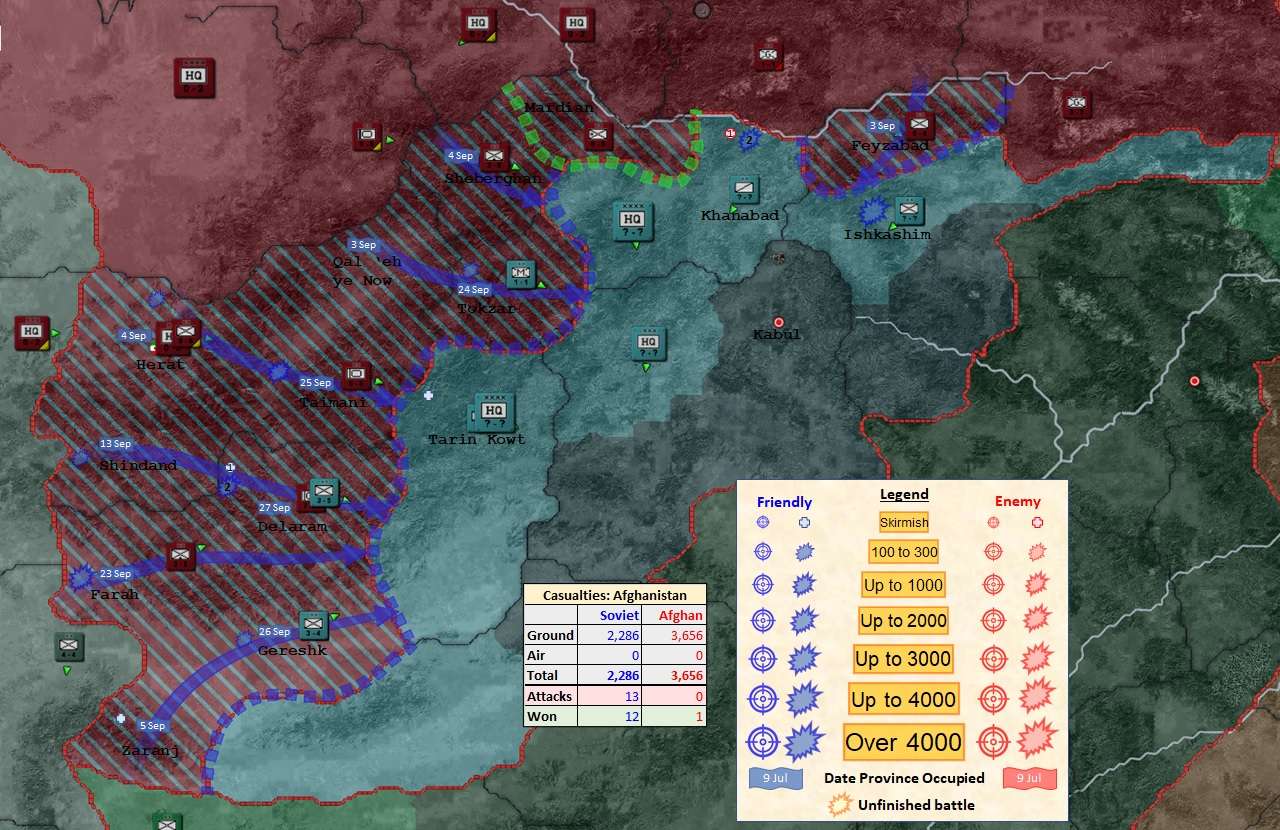
The front line as at 1 September 1946 is in green, advances during the month in blue.
In the Far East, most Soviet forces had returned to the pre-war boundaries. Some Japanese troops were still passing through northern Sakhalin.
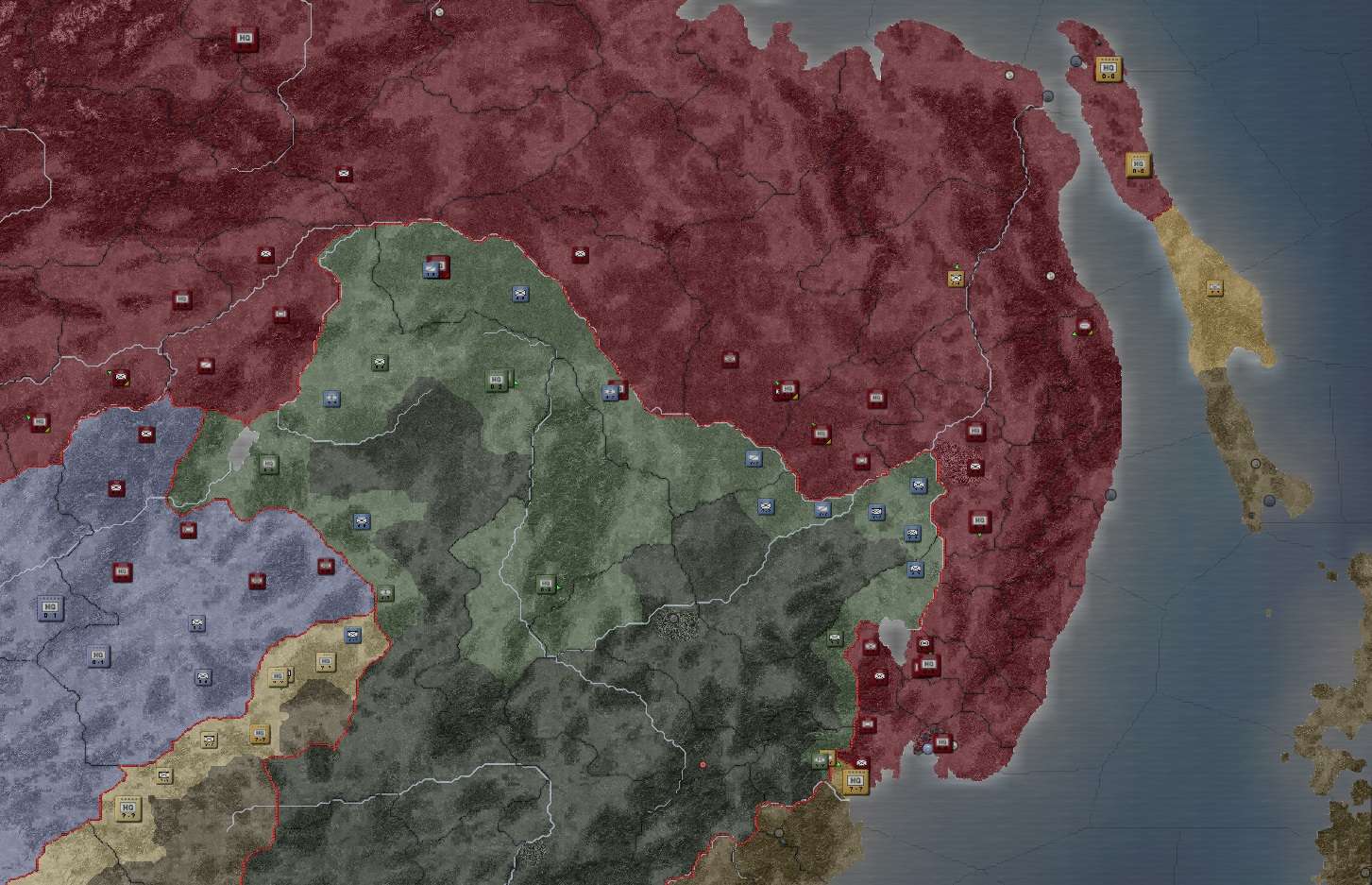
******
Industry, Diplomacy and Intelligence
As at midnight on 1 October, the Soviets’ second atomic bomb was 90% complete. Nothing had been spent producing supplies all month, but the stockpile was maxed out and usually running at a daily surplus. The recent radar upgrades for fighter aircraft had increased the expenditure in that sector somewhat; it still remained fairly low for now, but meant a few of the most recently queued projects were on hold.
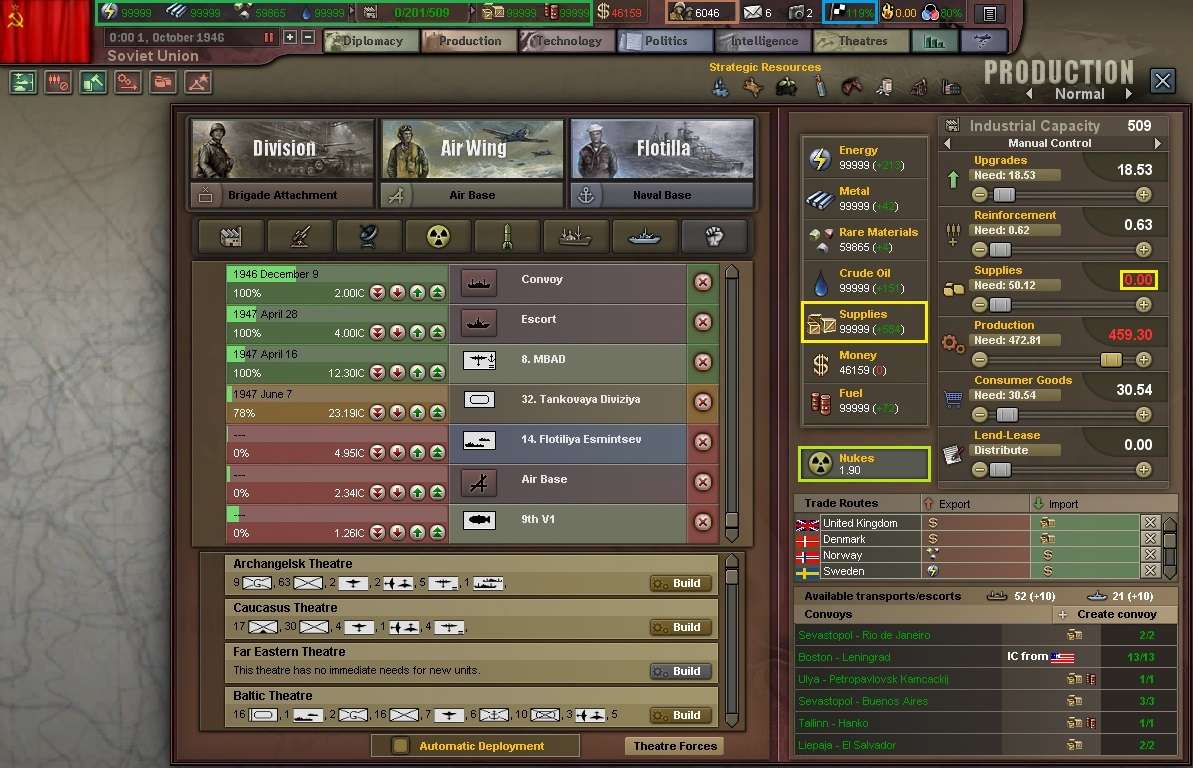

The Soviet diplomatic influencing effort continued unabated. Spain was drifting a little more to the Allies than the Comintern, but Turkey was inching a little closer to the Soviet orbit. The Allies were now influencing Xibei San Ma, but the Guangxi Clique and Yunnan were moving steadily towards alignment with Moscow. Sweden was again self-aligning to the Comintern. At least this should continue to keep them out of the Allied camp for the foreseeable future.
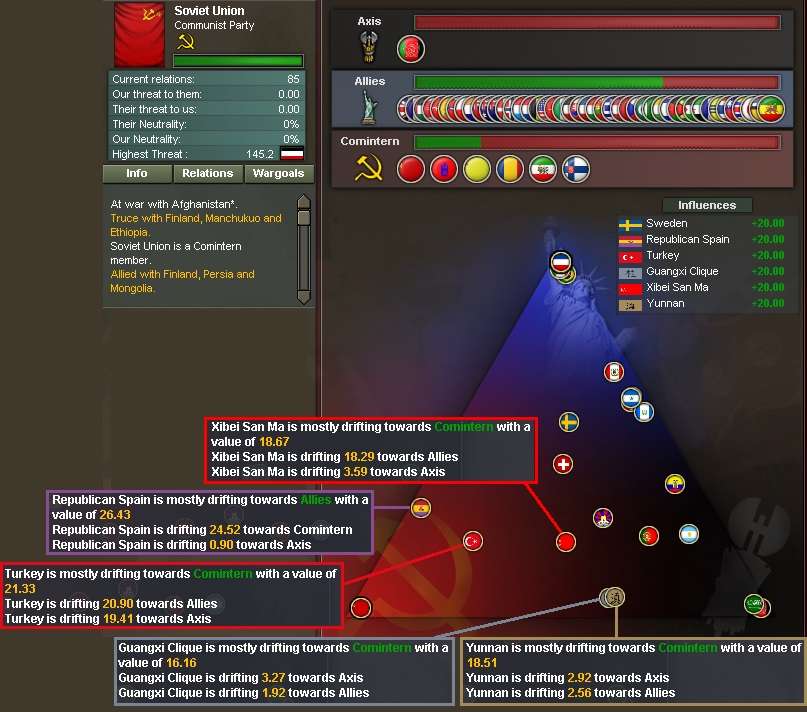
******
Comparisons with the West
Note: I tagged briefly to get some general statistical information that would probably have been reasonably well known in reality on the principal Allied members, either by size, manpower reserves or industrial capacity. This should broadly inform any discussions about The Next War.
As a very broad indicator (and not really an accurate one especially where the US is concerned), here is a list of the top countries ranked by how many VPs they control. Once more, not getting Japan into the Comintern in particular was a low blow here. The Allies currently have this market all sewn up.

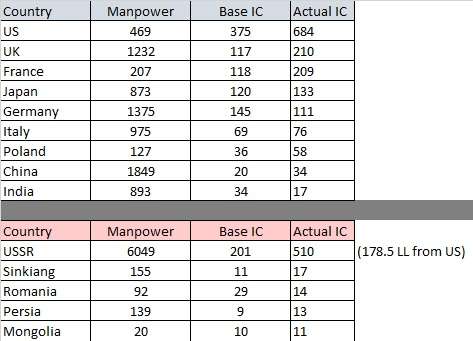
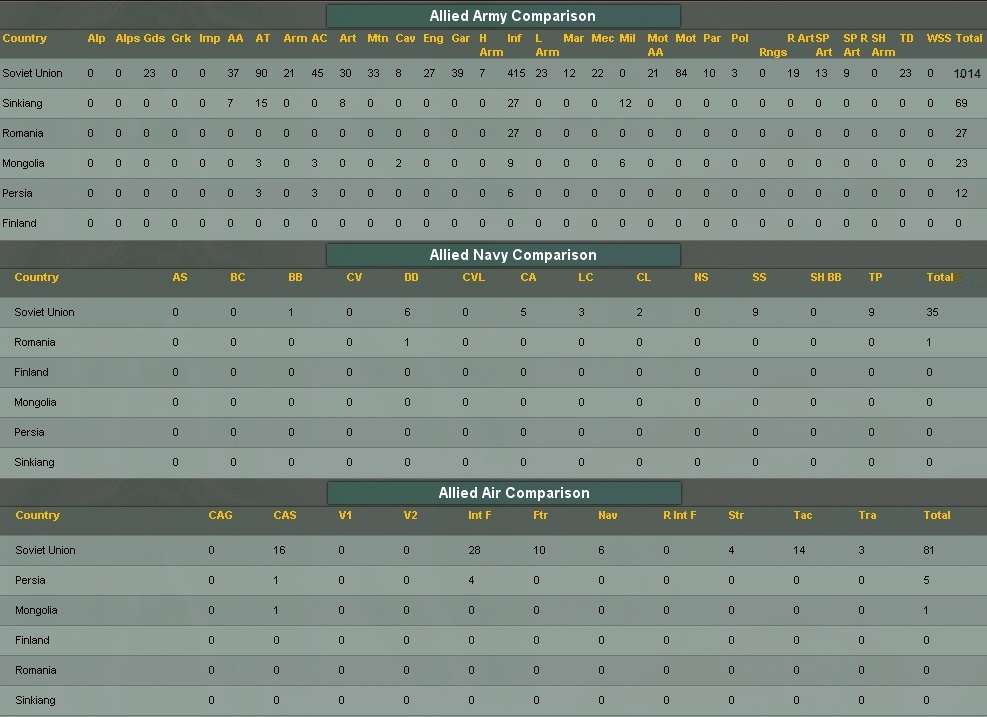

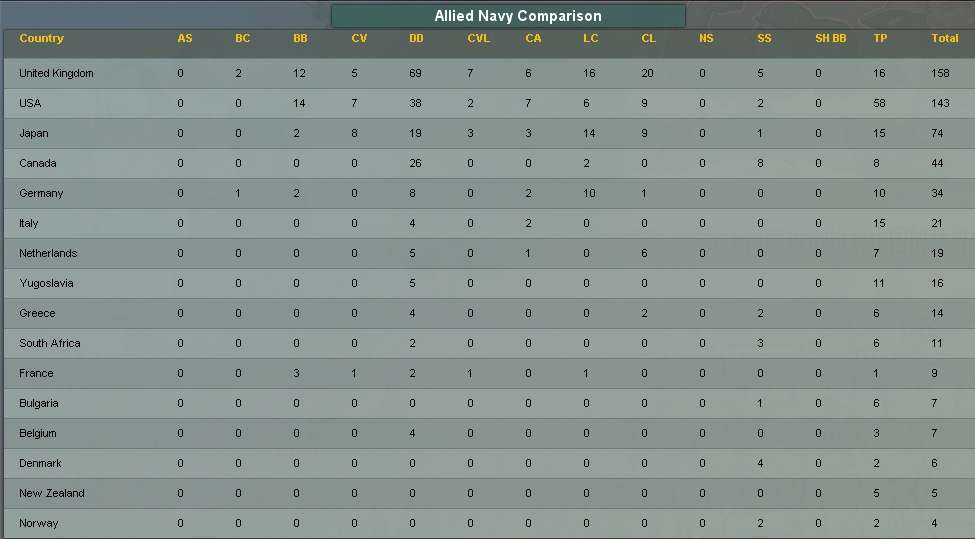

- 3
- 1
- 1


